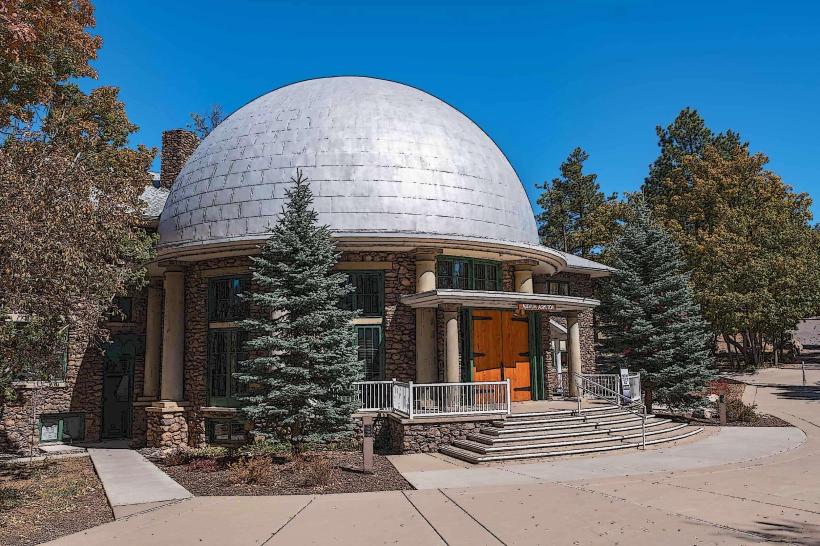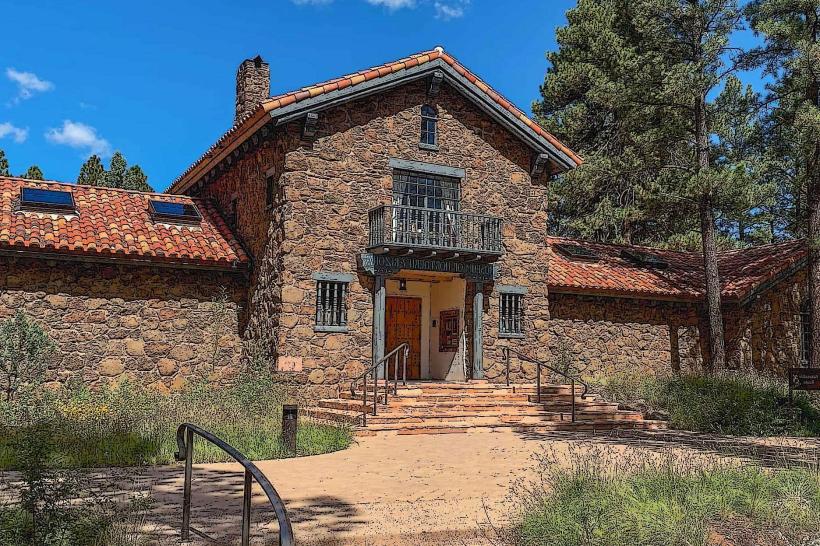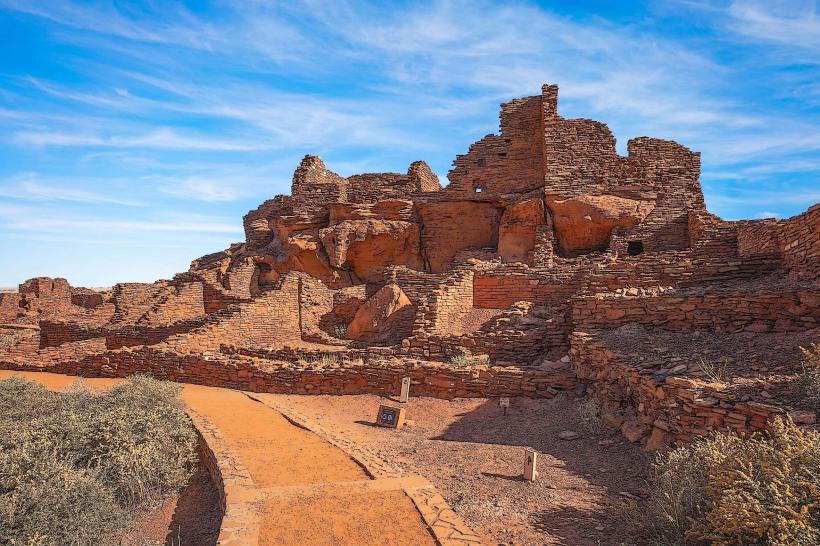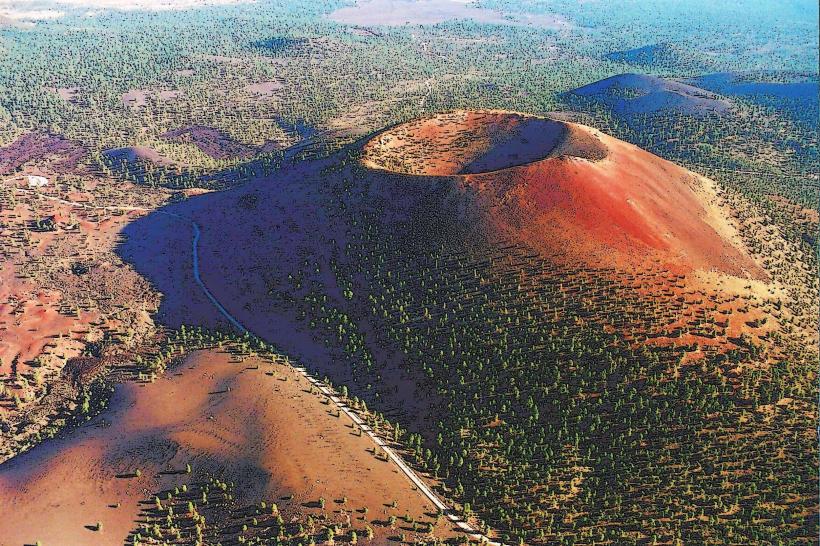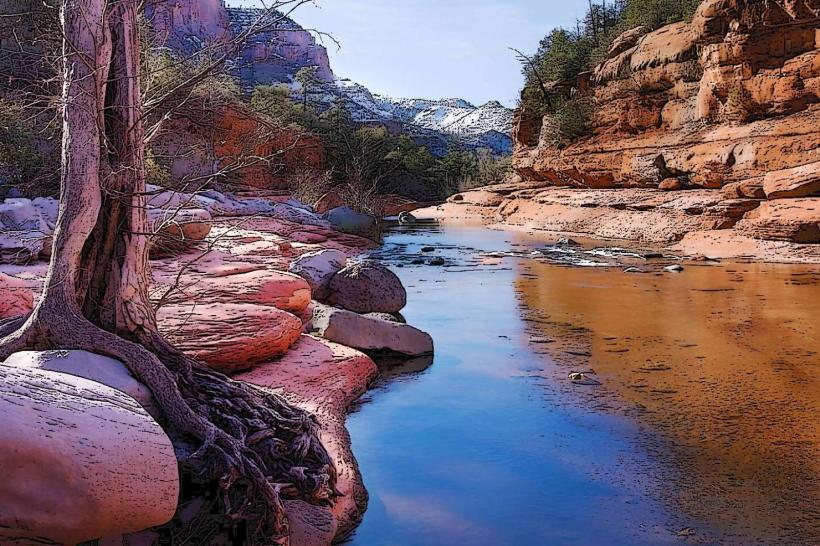Information
Landmark: Flagstaff ArboretumCity: Flagstaff
Country: USA Arizona
Continent: North America
Flagstaff Arboretum, Flagstaff, USA Arizona, North America
Overview
Just south of downtown Flagstaff, Arizona, the Arboretum sprawls across high desert ground at 7,150 feet, blending a one-of-a-kind botanical garden with a busy research center where pine-scented air greets every visitor, and covering roughly 200 acres high on the Colorado Plateau, it offers visitors the rare chance to wander among native plants and the semi‑arid forests and sunlit meadows that define northern Arizona.The Arboretum’s main goal is to spark learning, protect resources, and support research on drought-hardy plants and the wild landscapes native to the Colorado Plateau, where red sandstone meets resilient sagebrush, on top of that it’s both a public garden where visitors can wander past blooming desert cacti and a scientific research station run in partnership with Northern Arizona University.In this dual role, it serves as a hub for exploring plant ecology, guiding restoration efforts, and tracking the region’s biodiversity-right down to the rustle of leaves in a newly revived meadow, to boot the Arboretum showcases more than 750 native plant species-about 2,500 individual specimens, each recorded as an accession.Every planting is chosen with care to highlight sustainable landscaping and conservation gardening suited to the region’s dry air and high mountain light, besides as you wander the grounds, you’ll pass through a patchwork of gardens-dry, water-wise beds, buzzing pollinator havens, cool shaded corners, and wildflower meadows swaying in the breeze.From June to August, native wildflowers erupt in brilliant blooms, splashing reds and yellows across the desert-forest’s green and dusty-brown backdrop, on top of that the Arboretum weaves its paths and gardens around preserved natural habitats, letting wild grasses and historic oak trees remain part of the landscape.Visitors can wander along trails that twist through ponderosa pines, stretch across sunny meadows, skirt quiet wetlands, and circle Willow Pond-a still, blue pool that shelters endangered native fish like the Little Colorado spinedace, consequently these wild spaces are essential for keeping plant life varied and for giving local wildlife a venue to thrive, whether it’s a fox slipping through tall grass or a sparrow nesting in a hedgerow.With its patchwork of habitats, the Arboretum buzzes with life, making it a prime spot to watch a red fox slip through tall grass or hear warblers calling from the trees, besides birdwatchers sometimes count over 130 species in a single trip, from darting hummingbirds to soaring raptors, chattering songbirds, and ducks skimming across the water.Butterflies flutter past, lizards dart over warm stones, and miniature mammals scurry through the undergrowth, all weaving into the site’s rich ecological tapestry, also the Arboretum doubles as a research hub, where the Merriam-Powell Research Station hums quietly on-site, supporting studies in ecology, restoration, and environmental science.At the Arboretum’s friendly visitor center, you can browse exhibits that bring local ecosystems to life, pick up handmade crafts or native plants in the little gift shop, and pause for a break in the seating area after visiting the restrooms, in turn from here, well-marked trails wind out across the grounds, some gentle enough for a leisurely stroll, others steep enough to feel the crunch of gravel under your boots, in some ways Oddly enough, Some trails wind along smooth pavement or packed gravel-easy for a relaxed amble or a wheelchair’s steady roll-while others are rough, natural paths that slip into shady forest and open, sunlit meadows, consequently most visits mean spending an hour or two wandering the paths, taking in the wide range of plants and the curve of the hills in the distance.The Arboretum thrives on learning, with programs and events at its heart-like a spring workshop where the scent of fresh lilacs fills the air, in conjunction with during the open season, a guide leads daily tours-usually at 11 a.m.-sharing stories about the local plants and the region’s ecology, from the scent of wild sage to the rustle of tall grasses.All summer long, you can join wildflower walks, birding tours, raptor shows with live hawks from local falconers, and browse art exhibits, in addition events like “Ales with the Arb,” where you can sip a stout while listening to an expert share tree lore, along with seasonal favorites such as pumpkin walks and plant sales, draw in visitors of all ages and keep them coming back.Because of its high elevation and unpredictable mountain weather, the Arboretum welcomes visitors mainly from late April until late October, when the lilacs are in bloom and trails are clear, consequently it stays closed through the winter, when deep snow and biting frosty make the trail hard to reach and the plants fall silent, fairly We’re open Wednesday through Sunday, 9 a.m, then to 4 p.m, and the last ticket’s sold just before the doors shut.Admission’s reasonably priced, helping cover upkeep and events: adults pay about $12, kids 5 to 17 pay $6, and little ones under 5 get in free, while you can bring your dog on a leash for a tiny fee, though during enormous events-like the summer fair-there may be limits.At the Arboretum, sustainable gardening isn’t just talk-it’s lived out through clever solutions like passive solar heating in the greenhouse, rich compost piles steaming in the morning chill, rainwater collected in wide cisterns, xeriscapes planted with hardy, drought-loving blooms, and irrigation fed by recycled water, equally important the nursery grows native plants, then sells or shares them for local restoration work and for home gardeners who want earth‑friendly yards, whether that means drought‑tolerant sage or a patch of wildflowers buzzing with bees.Visitors should be ready for shifting weather-one moment it’s sunny, the next a cool wind sweeps in-since the high elevation can trigger sudden temperature drops, then wear sturdy shoes and bring sun protection-the trails can be rocky in places, and the high desert sun beats down without mercy, slightly You’ll reach the Arboretum by a brief stretch of forest-service dirt road, where regular cars can pass but you’ll need to take it unhurried over the loose gravel, then frequent visitors can sign up for a membership that lets them come as often as they like and enjoy discounts on programs-think weekend workshops or evening classes.The Arboretum at Flagstaff brings together rare plant conservation, hands-on environmental learning, and the quiet beauty of a high desert forest, where juniper trees stand against crisp mountain air, what’s more visitors can wander among native plants, watch a hawk cut across the dazzling sky, and learn about the rich natural heritage of northern Arizona-all in a calm, inviting setting.With its focus on sustainability, research, and community outreach, it’s become a go‑to hub for both locals and visitors curious about the region’s ecology and culture-whether that’s spotting herons along the shoreline or learning from local artisans.
Author: Tourist Landmarks
Date: 2025-10-05

